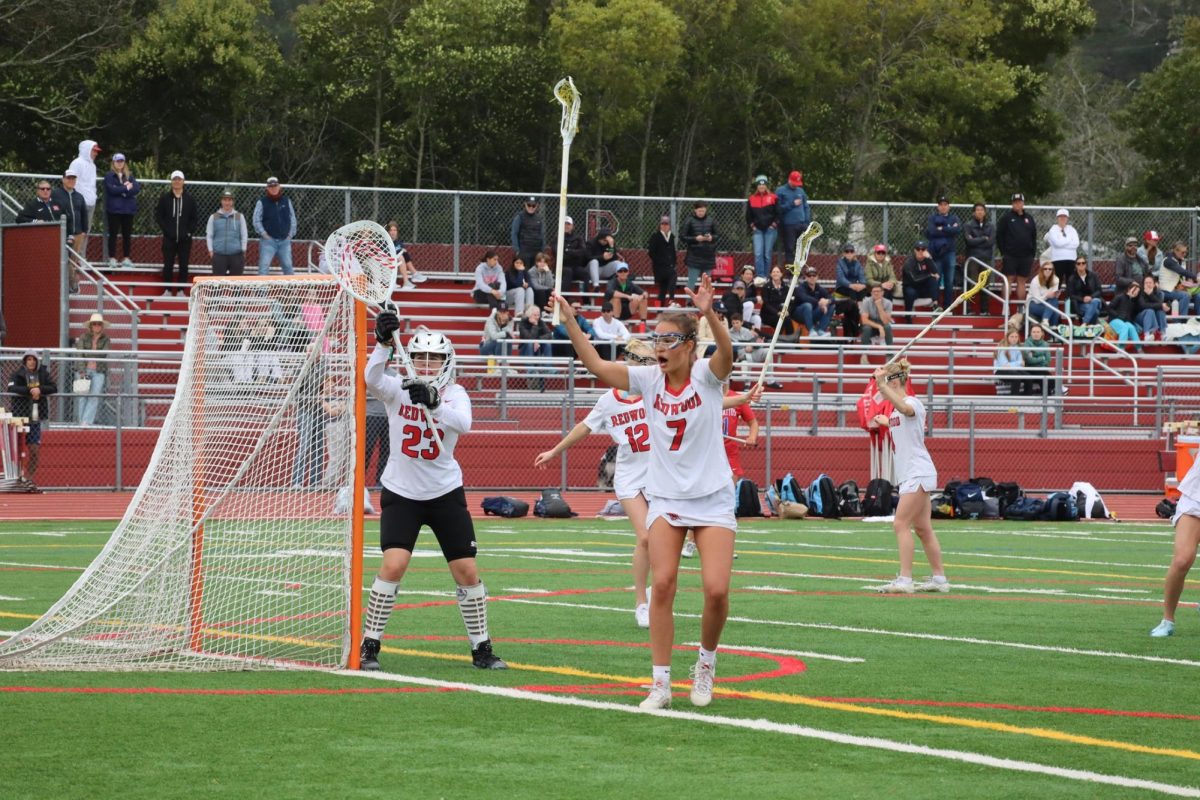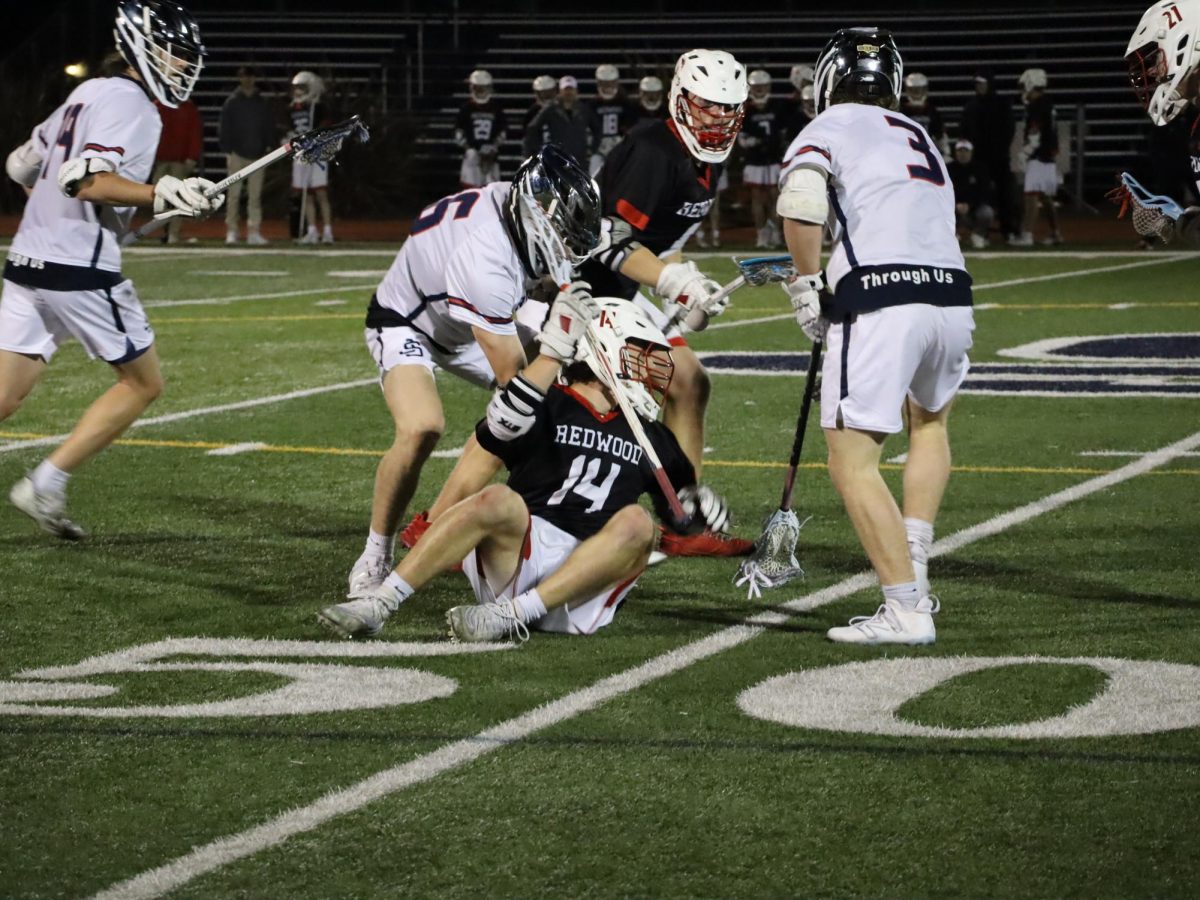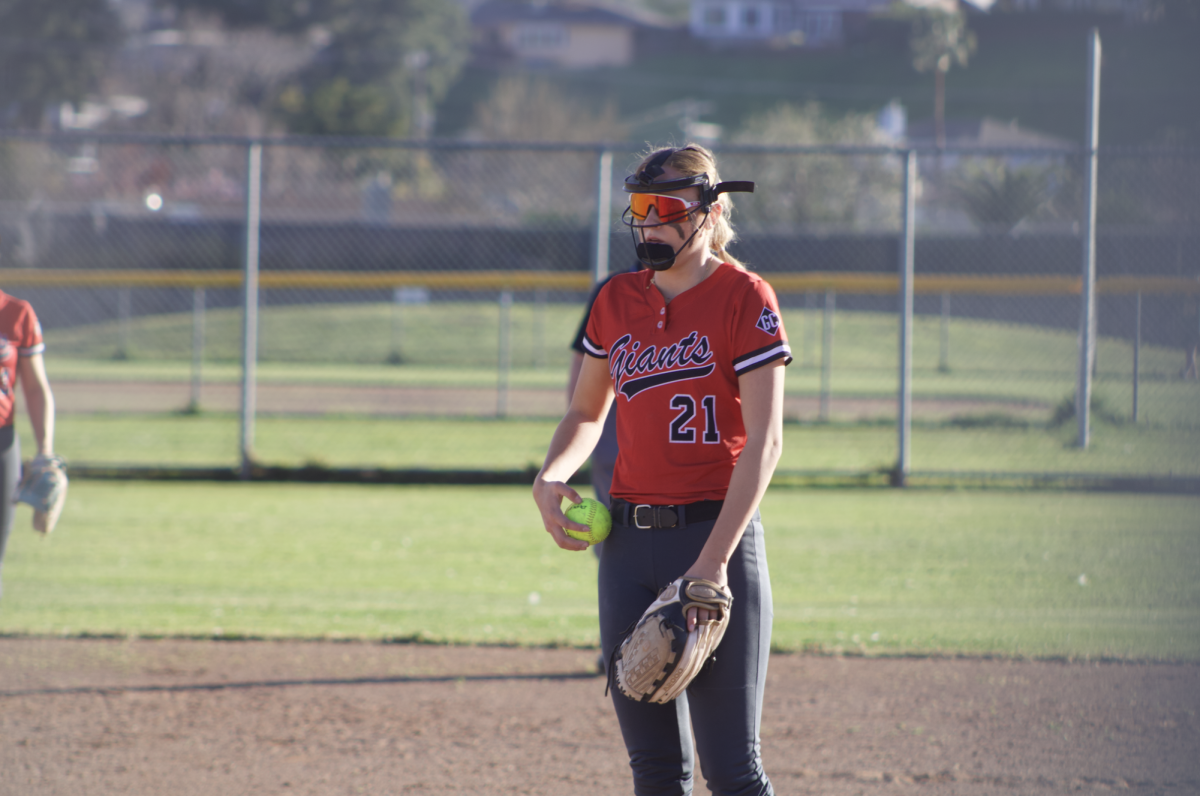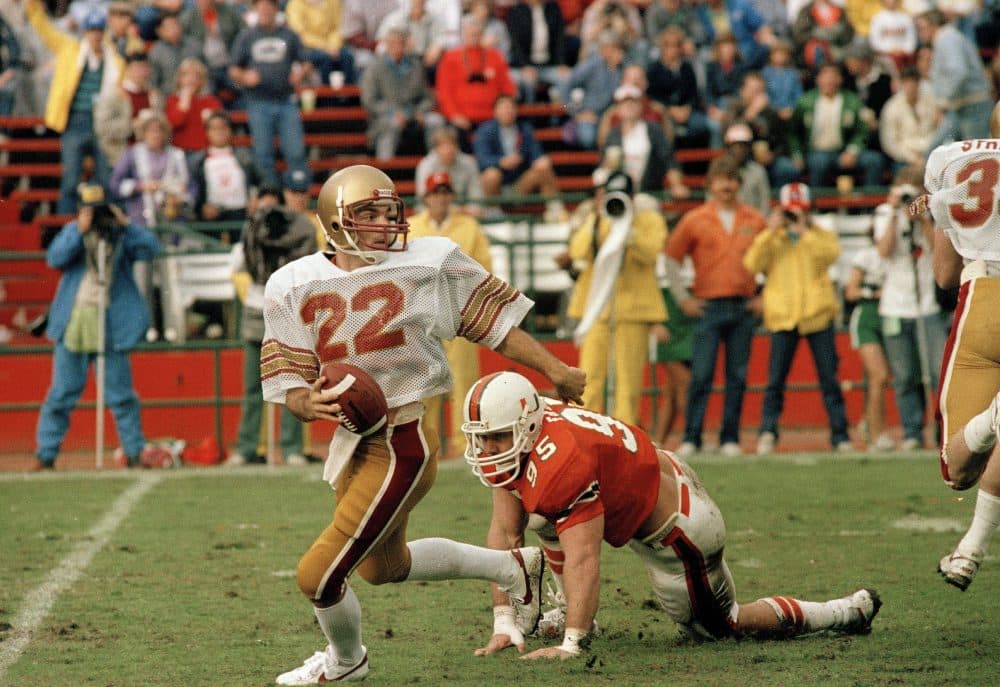Girls’ volleyball looks to continue MCAL dominance amidst key departures
After years of steamrolling lesser MCAL competition, the girls’ varsity volleyball team is hoping a 2016 squad touting a mixture of proven upperclassmen starters and competitive, hungry younger players will continue its dominance.
This year, the team’s success will likely hinge on the play of senior outside hitters McKenzie Cooke and Claire Jackson.

Alike in size and stature, the two combine for an unstoppable duo capable of hitting in the front row and playing the ever-important serve-receive in the back row.
Jackson will return healthy after an ankle injury cut her season short last year.
Her return will be vital in order for Redwood to move forward without key graduates such as former MCAL Player of the Year Elly Lundberg and former starters Kylie Kvam, Lily Barber and Marguerite Spaethling.
In her limited time last year (25 sets played), Jackson posted 2.9 kills per set on a 41.2 kill percentage.
While that wasn’t quite as efficient as Lundberg’s 3.5 kills per set on a 52.3 kill percentage, another year of experience under her belt as well as more time to ease into the season should allow Jackson to improve and do a fine job replacing Lundberg’s production last year.
The Giants will need Cooke and Jackson to be on their best game every time they step on the court, leading the team in their own individual ways.
“[Jackson] is amazing at leading people to be aggressive,” senior setter Mari Molina said. “[Cooke] always wants to be the best. That has always been her goal.”
Molina led the Giants last year in assists with 1,239 and serving points with 310.
As a leader, Molina wants to see all of the newcomers get out of their comfort zone and be aggressive so they won’t be nervous in games.
“I just want the new girls on the team to not be afraid to do anything. I want them to swing at every ball, even if they hit the doors at practice, because when they are playing in a game against some 6’4” girl they won’t be afraid to be aggressive,” Molina said.
The members of the team this year are spread out through all grade levels having only three seniors, five juniors, three sophomores and freshman Olivia Cooper.
From her leaders perspective, Cooper will have a bright future in Giants volleyball.
“[Cooper] is probably going to be a big part of our team this year, and I don’t think the bench is somewhere she is going to be a lot,” Cooke said. “She’s got a great attitude, she’s strong already and she’s ready to play. So we are going to get her out on the court as much as we can.”
Both Cooke and Molina believe that Marin Catholic will be their greatest competitor this year because it will have more varsity returners.
“It’s going to come down to who practices harder, who wants to get better, and who wants to win more. But [Marin Catholic] does have more girls on varsity from last year than us, so they have more people that know what it is like,” Molina said.
According to Cooke, the Giants’ main focus this year is improving the team chemistry, and for the seniors to be supportive for the newcomers and underclassmen.
“I think that it will take us a little longer to get used to each other, but since it is a younger team it will be a lot of fun to get to know each other and how everybody plays,” Cooke said. “There’s no hazing or anything.”
This year the Giants will need to focus more on the basics and simple moves, whereas last year they were all comfortable playing with each other, according to Molina.
“This year, it’s basically going to be figuring everyone out and playing with new people at a new pace of play,” Molina said. “We can become a better team if we all focus on getting better at every position instead of just a specific position.”
Also, returning to the varsity team for the Giants’ this year will be sisters Desi D’Ancona and Nique D’Ancona, who honed their skills playing in Italy in the Global Challenge along with Cooke.
“Desi is definitely someone who looks really strong this year that didn’t really get a lot of chances to play in games last year,” Cooke said. “[Nique] as well is looking great and fighting for a starting spot as a [defensive specialist] or a libero.”
Defensive specialist and libero are open for competition after Barber’s departure.
Senior Desiree Hale, who would have seen significant time as either a defensive specialist or libero, suffered a serious knee injury that will keep her out the entire season.
“Desiree, being a senior and on the team last year, would be a good leader on the court along with [Cooke], [Molina], and I,” Jackson said. “She would have competed for a [defensive specialist] or libero spot.
The Giants will look to gain some early season momentum from their second match tomorrow at San Marin.
By the Numbers
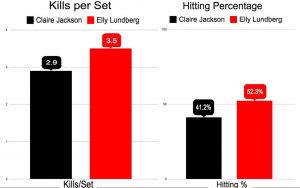
.392 hitting percentage:
Hitting percentage can be calculated by this formula: (Kills – Hitting Errors) / Attempts. Essentially what this means is that the expected value of every attacking attempt is .392 points. In other words, every time Redwood had an attacking attempt, its lead over its opponent increased by an average of .392 points.
A hitting percentage over .200 is considered proficient, so .392 as a team statistics is rather remarkable. With the departures of Lundberg and Spaethling, who hit .452 and .529, respectively, the team’s hitting percentage should experience a slight dip.
18.1 digs per set:
This statistic is by no means exceptional, but considering the high hitting percentage of Redwood resulted in a lot of first-ball kills, 18.1 per set is definitely respectable. With Barber, the star libero, off to Cornell, the Giants are going to have to find someone who can replace her, if not replicate, the 5.7 digs per set that earned Barber a spot on the MCAL first team. With fewer dominant attackers on the team than in years prior, Redwood’s ability to keep the ball in play is going to be essential this year. D’Ancona and Cooper are players who will likely see time as either a defensive specialist or a libero.
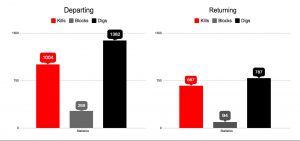
2.9 percent error rate on serve-receive:
Redwood’s defense was only aced on 2.9 percent of serves. With Cooke and Jackson holding down the serve-receive as outside hitters, this statistic should remain a low percentage, which bodes well for the Giants’ championship aspirations.
3.0 blocks per set:
Redwood was strong on the net defensively last year, mainly due to the blocking prowess of right-side hitters Spaethling and Kvam, who combined for 1.5 blocks per set. With both of them gone this year, the blocking will likely be less efficient, and Redwood will have to rely on strong defense in order to succeed at the level it aspires to be at.

